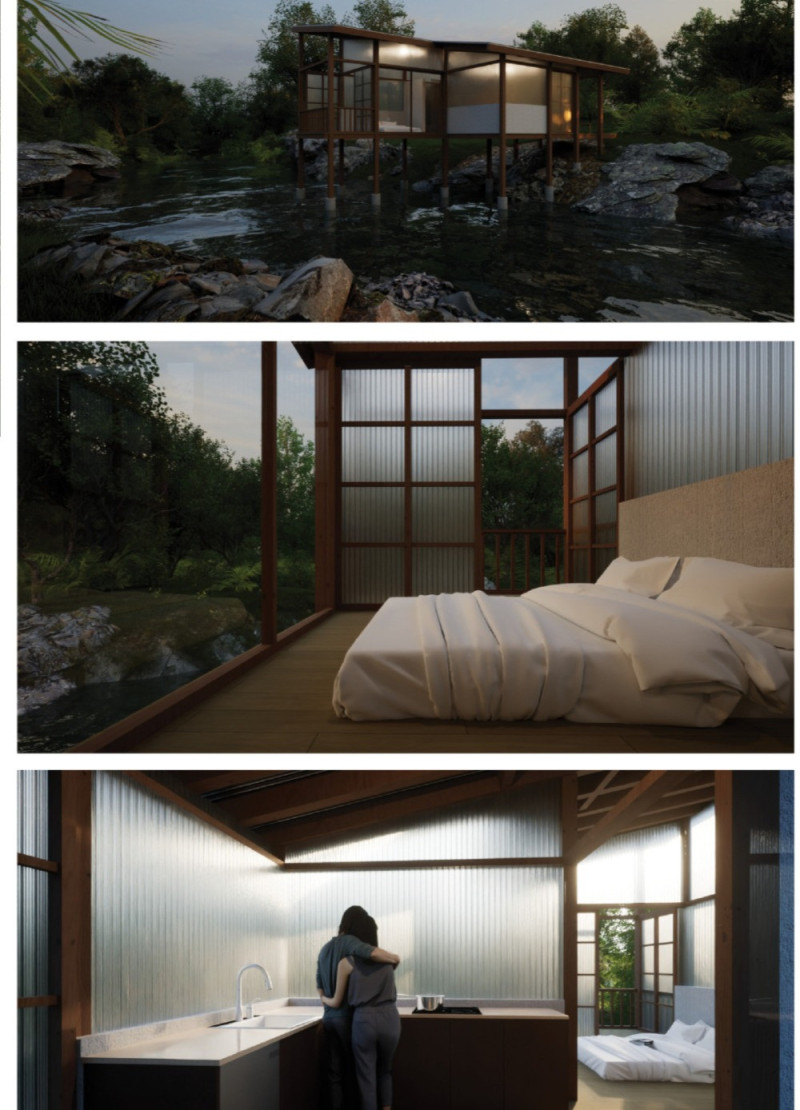5 key facts about this project
The House of Maena is located in Thailand and reflects a thoughtful connection with its natural environment. Situated along a river, the home is designed to be self-sufficient, utilizing the water for drinking and power generation. The overall concept is focused on sustainability and draws inspiration from the surroundings, showing how architecture can coexist with nature.
Sustainability and Resource Use
The design emphasizes a nurturing relationship with the river, highlighted by the phrase, “Be nurtured by the river mother, in the shelter she provides.” It efficiently integrates essential resources by using a water pump and turbine. Fresh water is drawn from upstream and treated for safe use in the home. The turbine harnesses the river's flow to provide electricity. This approach demonstrates how local resources can create a functional and sustainable living environment.
Materiality and Structure
Lamboo, an engineered bamboo product, is used as a primary construction material. This choice reflects local vegetation and is in line with a commitment to sustainability. Bamboo grows quickly and has a low impact on the environment, making it an ideal fit for the project. By using locally sourced materials, the design limits transportation emissions, further supporting ecological responsibility.
Ventilation and Indoor-Outdoor Flow
The home features operable polycarbonate panels that allow for natural ventilation. This design enables residents to adjust their indoor climate effectively while fostering a connection to the outside environment. The large panels can be opened completely to create a patio area, enhancing the space where indoor meets outdoor. This feature invites natural light inside, enriching the living experience.
Water Management and Roof Design
An important aspect of the design is the slanted roof, which is engineered to manage rainwater effectively. In a tropical climate, where heavy rainfall can occur, this feature helps prevent water accumulation. The roof's design serves both practical and aesthetic purposes, contributing to the overall balance within the home while maintaining functionality in a challenging climate.



















































